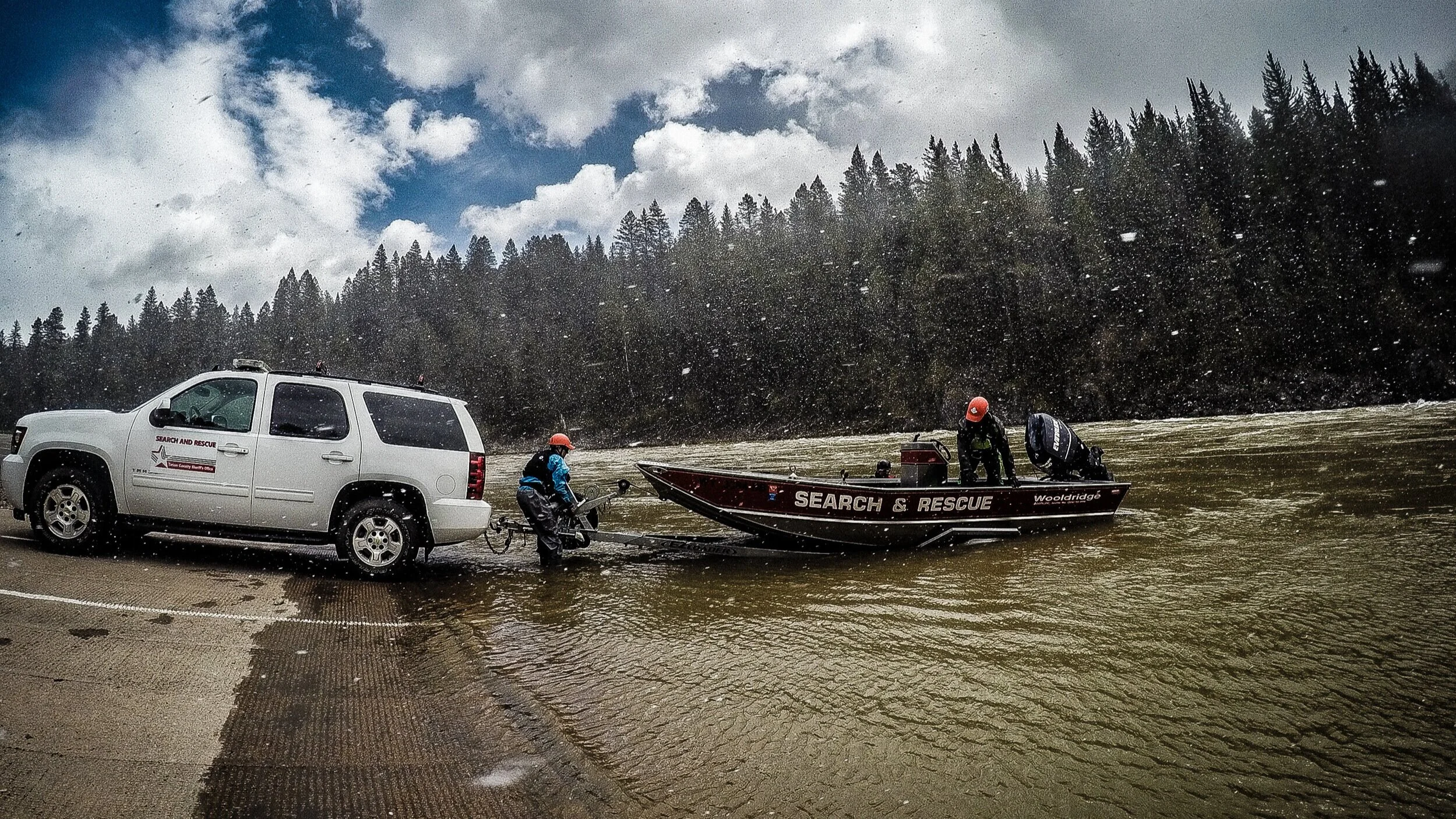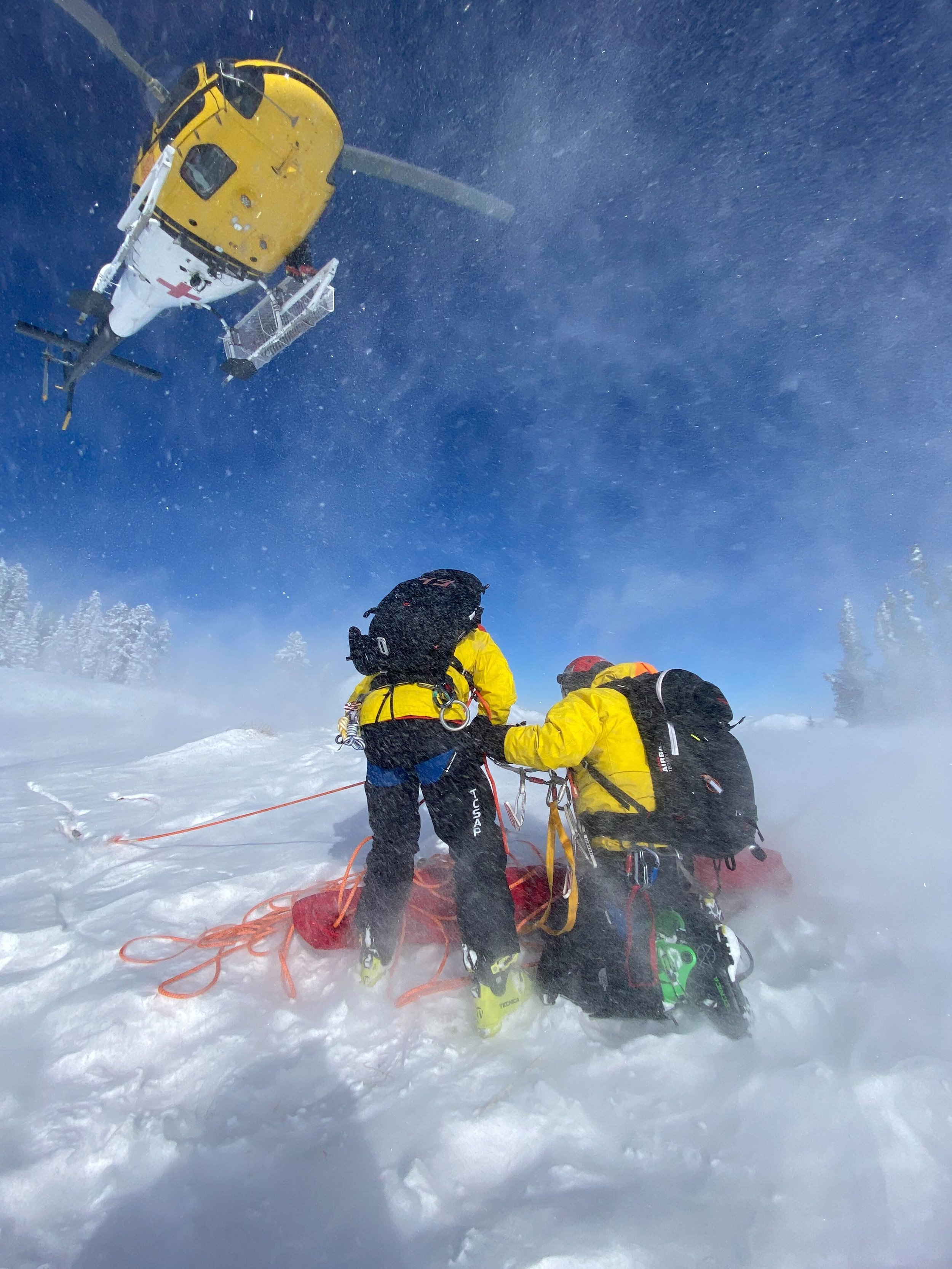Jackson, Wyo. — Local rescuers had a busy weekend with four callouts. Three calls came on Saturday: an injured skier on Pucker Face outside of Jackson Hole Mountain Resort; an injured skier in Stewart’s Draw in Grand Teton National Park; and a snowmobiler who was stuck in a creek in the Togwotee Pass area. The rescue on Sunday involved an injured skier in Avalanche Canyon in GTNP.
In one of three calls on March 8, TCSAR responded to a snowmobiler who’d become stuck in a creek in the Gros Ventre Mountains. The mission took 8 hours, 32 minutes, with volunteers getting back to base at 3:45 a.m. Photo: TCSAR
On Saturday, March 8, the first call came in at 10:43 a.m. regarding an injured male skier on Pucker Face. JHMR Ski Patrol arrived on scene and requested helicopter assistance from Teton County Search & Rescue. A heli team flew to the scene, where they short-hauled the local skier to a waiting ambulance at the base of Teton Village.
Later, at 2:45 p.m., Jenny Lake Rangers in GTNP requested helicopter assistance from TCSAR after receiving an emergency call regarding an injured male skier near the bottom of Stewart’s Draw. A heli team including park and TCSAR personnel responded to the accident site. The team short-hauled the local skier out of the backcountry, from where he elected to self-transport.
Saturday's third rescue call came at 5:43 p.m. for a snowmobiler in the Togwotee Pass area. The local male had been crossing a snow bridge on his machine when the snow collapsed beneath him, causing him and the machine to fall into a creek.
TCSAR sent four volunteers up the Gros Ventre Road via snowmobile, while another team entered the backcountry from Togwotee Pass. A friend of the stranded snowmobiler also joined the effort. The friend made contact with the subject at 11:23 p.m., followed by TCSAR volunteers about 30 minutes later. The subject was reported to be extremely tired and cold.
After trying to warm the subject, TCSAR transported him out of the backcountry to the Gros Ventre Road. After making it out of the field, the team provided the man with a ride back to town. The volunteers arrived back at the SAR headquarters at approximately 3:45 a.m.
On Sunday, the Jenny Lake Rangers called TCSAR at 1:40 p.m. requesting helicopter assistance to help an injured female skier in Avalanche Canyon. The TCSAR pilot flew the county ship to the park and picked up a team of rangers. The team extracted the patient via short-haul and flew her out of the backcountry. The woman decided to self-transport from there.








